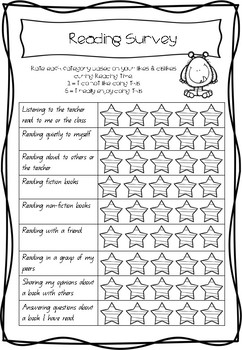- Attitude Survey Questions
- Student Attitude Survey
- Attitude Survey Data
- Pew Research Center Global Attitudes Survey
Employee attitude surveys are highly effective when it comes to taking the temperature of the labor force. These surveys are usually done anonymously in bigger groups as. Reading Attitudes Survey This is an informal assessment used to gauge a student's attitude toward reading. This assessment is provided by the Storia portion of the Scholastic website, and it is appropriate for a variety of ages.

Insights into security transformation and prevalent attack vectors in a work-from-anywhere world
CrowdStrike’s third annual global survey produced by independent research firm Vanson Bourne reveals that recent months continue to see a proliferation of ransomware, heightened concerns around nation-state actors, and the need to accelerate both digital and security transformation in a work-from-anywhere world. The 2020 Global Security Attitude Survey report is based on responses from 2,200 senior IT decision-makers and IT security professionals across major industry sectors in Australia, France, Germany, India, Italy, Japan, Middle East, Netherlands, Singapore, Spain, U.K. and U.S.
Download the survey report to learn:
- How the threat of ransomware has changed in the past year and how costly it can be when there’s no other option but to pay the ransom
- Why nation-state actors now seem more motivated than ever to target organizations
- The critical importance of layering security transformation into your digital transformation strategies
How far organizations still need to go to meet the 1-10-60 ideal for detecting and containing a threat in their network

Latest Reports
For technical information on installation, policy configuration and more, please visit the CrowdStrike Tech Center.
Attitude is a group of opinions, values and dispositions to act associated with a particular object or concept. Measuring attitude in your survey can be difficult because it requires a series of questions to evaluate it effectively. Here are some examples of subjects that an attitude survey might attempt to measure.
- Attitude on Immigration
- Attitude on Space Exploration
- Attitude on Stem Cell Research
The series of questions developed to assess attitude is commonly done in a “Likert Scale.”1 This scale is a set of opinion statements which when combined, provide information about an attitude. Here’s an example of a series of questions in a Likert Scale format found in a Customer Attitude Survey:
When using this format in self-completing survey questionnaires, there are four factors that influence the responses:
1) There is bias to respond with ‘agree’ categories rather than ‘disagree.’
Attitude Survey Questions
2) There is bias to select categories to the left of the scale rather than the right side.
3) There is a tendency to select responses towards the center of the scale and avoid extremes of “strongly” agree or disagree.
4) There is a tendency for respondents to fall into a pattern of response such as all “agree” or “no opinion.”
Student Attitude Survey
You can also use a Semantic Differential Scale2 to assist in your determination of attitude. The challenge here is to define meaningful end points such as “Traditional food to Nouveau Cuisine” as shown in the sample below from a Product Survey.
Attitude Survey Data
1Rensis Likert (1932) “A Technique for the Measurement of Attitudes”
Pew Research Center Global Attitudes Survey
2 Charles E. Osgood (1956), “Method and Theory in Experimental Psychology”